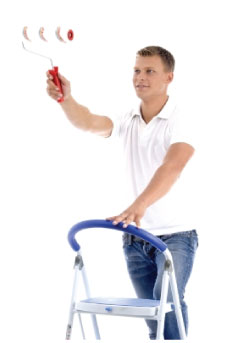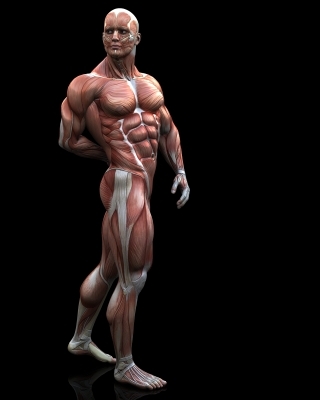Sent by Jason of Riskatmedia.com
All work activities carry the potential to cause harm to our own and others’ health and well-being, but we sometimes forget how real and close to us these hazards are. Every year, a large number of people are killed at work, and an even greater number of people suffer work related injuries because they are unable to follow safe working practices. There are particular hazards associated with lifting operations, some of these hazards accompany almost all types of work activity, such as manual handling and slips and trips. Others, such as contact with moving or falling objects and contact with moving machinery, are of particular concern to personnel involved in lifting operations as they result in a significant number of fatal and serious injuries each year. In fact, contact with moving or falling objects is the third greatest cause of workplace fatality and the second greatest cause of major accidents at work.
Manual Handling
Manual handling related activities are a major cause of occupational injury. Low back pain, joint injuries and repetitive strain injuries of various sorts, affect over a million people each year, and many of these injuries are the result of manual handling. Prior to carrying out any unavoidable manual handling activity you should help to protect yourself from injury by following good manual handling practices. Consider the task to be carried out and the nature of the load, and be aware of your own capabilities and the environment in which you are working. In particular, lifting accessories, lifted equipment and loads can be extremely heavy and you should give consideration to safe manual handling practices before undertaking any job that involves lifting these items.
Slips, Trips and Falls
Slips and trips represent a significant cause of work related injury. Slips and trips can result from contamination, obstacles, inappropriate footwear, reduced visibility, the environment and people’s attitudes. Good workmanship and good housekeeping are practices that can help to prevent accidents and fires. By removing waste materials to waste skips you can contribute significantly to good housekeeping. You can also reduce the risk of slips and trips by properly routing any cables or hoses that you use, by ensuring that a safe place of work is, by ensuring that you always wear appropriate footwear, by considering whether the environment in which you will be working increases the risk of slips and trips and by taking responsibility for your own and your colleagues safety and appropriately containing any spills that you might discover. Spills involving oil or hydraulic fluids represent a significant hazard, as they present a dangerous slip hazard and also involve substances that are both hazardous and flammable. It is extremely important that your work area is kept clear of slip and trip hazards during lifting operations, when your own and your colleagues attention will be quite rightly focused on the lifting task at hand.
Contact Risk
Contact with moving or falling objects is a significant hazard to personnel involved in lifting operations, as well as to personnel working close by, and can result in death or serious injury. It is therefore vitally important that safe working practices are followed at all times during lifting operations to ensure that loads do not move, swing or fall.
Training and Approval
All personnel need appropriate training and experience to be able to use work equipment safely. Never use lifting equipment unless you have received suitable training and are qualified and competent to do so. You should ensure that you are suitably qualified, competent and, where appropriate, have the necessary certifications to use the particular type of equipment that you will be working on. All lifting operations should be controlled by an appointed, competent person who should brief all team members before the lifting operation is undertaken.
The Lift Plan
To reduce the risk of loads moving or falling, all lifts should be planned. Frequent or routine lifts may be subject to a generic lift plan, supported by an onsite risk assessment and team briefing. For complex lifts, an individual and detailed lift plan should be documented. All lift plans should be reviewed and approved by the appointed, competent person. In particular, lifts should be planned so that personnel will not be standing or working directly beneath a load and so that the load will not be moved directly over people. The lift plan should also provide an escape route in the event of unexpected movement of equipment or of the load.
Suitable and Safe Equipment
It is important to ensure that all equipment used during lifting operations is safe and suitable for the job at hand. Lifting equipment should be subjected to a detailed and thorough examination by a competent person prior to its first use on site, upon installation, when it has been disassembled and reassembled at a new location, if it has been involved in an incident, if it has been overloaded, if it has been subject to modification or major repair to safety critical components, if there have been changes in the condition of its use such as periods out of service, and for equipment used to lift personnel. If you have any reason to doubt that such an examination has been carried out, do not use the equipment and report to your manager. In addition, all items of electrical equipment should carry a valid appliance test certificate or label, to reduce the risk of electric shock. Electric shock can result in death or severe burns. Serious injury can also result if someone falls or becomes incapacitated during lifting operations as a result of electric shock. Testing should be carried out by suitably trained individuals. You should also carry out a visual pre-use inspection of all equipment to ensure that it remains undamaged and ensure that all safety devices are fitted and are operational. If any item of electrical equipment does not carry a valid test label, it should not be used and you should inform your manager.
Load Integrity and Stability
Establishing load integrity and stability is also essential to reducing the risk of loads swinging, moving or falling during lifting. All equipment operators and users should be familiar with the safe lifting capacity of the equipment and should understand the effects of changes in configuration. The safe working load of the lifting system should be assessed, taking into account the configuration of the equipment and the operating environment where appropriate. This safe working load should never be exceeded. The load should possess sufficient integrity to withstand the forces applied during lifting and the method of rigging should ensure that the load remains stable and cannot tip, slip, swing or fall unintentionally. For this reason, all rigging and thorough daily pre-use inspections should be carried out by competent personnel. During jacking operations a firm level base should be provided against the load so that no sideways forces are present. Loads should also be checked in increments to prevent the limit of the jack stroke from being reached.
Human Factors
To reduce to risk of injury to other personnel from swinging, moving or falling loads, all non-essential personnel should be excluded from the area in which lifting operations are taking place. Barriers and warning signs should be used where appropriate to facilitate this, especially as people can make mistakes and may break the rules. These and other human factors play a significant role in safe lifting. Personnel should not undertake more than one task at a time during lifting operations and you should not take part in lifting operations if you are tired or otherwise unable to give your full attention to the task at hand. You should never come to work in possession of, or under the influence of, alcohol or drugs. These substances expose everyone on site to risks that are unnecessary and easily avoided.
Communication
Communication is a vital part of safe working practices during lifting operations. The lifting appliance operator needs to be able to understand and obey an emergency stop signal no matter who gives it, and any member of the lifting team needs to be able to issue an emergency stop signal. It is therefore vital that all members of the lift team establish, test and understand the verbal, hand signal or radio communications that will be used during the lift, prior to lifting.
Personal Protective Equipment PPE
Personal Protective Equipment, or PPE, is an important means of reducing the risks associated with lifting operations. At least standard PPE with safety glasses, a hard hat and industrial work gloves should be worn. Only PPE in good working condition will reduce the hazards associated with your work, so it is important to remove, clean and store your PPE correctly.
Noise at Work
Hearing loss caused by exposure to noise at work is a significant source of occupational disease, with many people suffering deafness, tinnitus or other ear conditions as a result of exposure to excessive noise levels at work. The level of noise and how long people are exposed to noise at work both contribute to potential hearing damage. Noise can be reduced to harmless levels by using ear plugs and ear defenders in high noise areas.
Emergency Procedures
In the event of an emergency while conducting lifting operations, lower any suspended loads, isolate any equipment that you have been using, make your work area safe and evacuate the area according to the site emergency procedures. If you are involved in an accident, seek immediate assistance. Lifting operations should never be carried out alone.
Riskatmedia – Safety Videos



